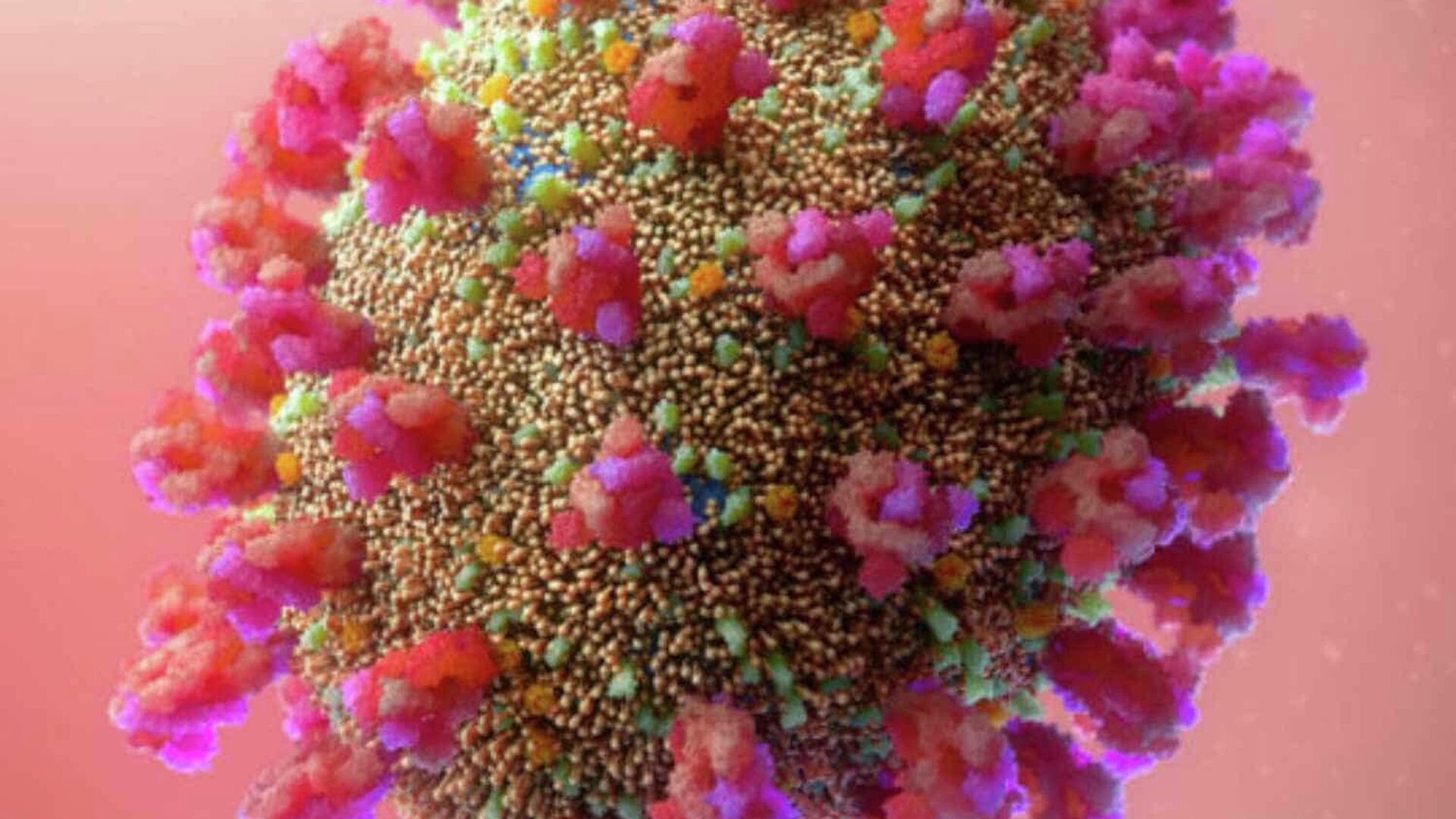https://sputnikglobe.com/20220319/omicron-survives-longer-on-some-surfaces-than-other-strains-of-covid-19-new-study-shows-1094013059.html
Omicron Survives Longer on Some Surfaces Than Other Strains of COVID-19, New Study Shows
Omicron Survives Longer on Some Surfaces Than Other Strains of COVID-19, New Study Shows
Sputnik International
The World Health Organisation designated Omicron a strain of concern due to its increased infectiousness compared to other variants of the disease, as well as its ability to evade vaccines. However, it is believed that it causes milder symptoms compared to its predecessors.
2022-03-19T14:13+0000
2022-03-19T14:13+0000
2022-08-06T13:32+0000
study
covid-19
strain
pandemic
coronavirus
science & tech
https://cdn1.img.sputnikglobe.com/img/07e6/02/01/1092663906_0:78:1500:922_1920x0_80_0_0_fd293605e0948c2df75e162c75608c60.jpg
Scientists from Hong Kong and Japan have suggested that Omicron survives longer on some surfaces than other strains of COVID-19.According to the findings of their study, which was published last week, it stays more than three times as long (193 hours) on plastic compared to the original variant (56 hours), which is said to have originated in China, as well as other strains such as Beta and Delta that emerged in South Africa and India respectively.Omicron could still be detected on glass and stainless steel after seven days. While on skin it survived for about 21 hours (the original strain survived no longer than 8 hours).However, this is not the time to push the panic button, as scientists note that individuals get infected by inhaling the virus rather than touching contaminated surfaces. Leo Poon, a professor of public health at Hong Kong University, told CNN that things that are touched frequently – doorbells, buttons in elevators, and handrails are places that people should focus on cleaning.
Sputnik International
feedback@sputniknews.com
+74956456601
MIA „Rosiya Segodnya“
2022
News
en_EN
Sputnik International
feedback@sputniknews.com
+74956456601
MIA „Rosiya Segodnya“
Sputnik International
feedback@sputniknews.com
+74956456601
MIA „Rosiya Segodnya“
the coronavirus pandemic, omicron, survives longer on somer surfaces, than other strains of covid-19, a new study showed,
the coronavirus pandemic, omicron, survives longer on somer surfaces, than other strains of covid-19, a new study showed,
Omicron Survives Longer on Some Surfaces Than Other Strains of COVID-19, New Study Shows
14:13 GMT 19.03.2022 (Updated: 13:32 GMT 06.08.2022) The World Health Organisation designated Omicron a strain of concern due to its increased infectiousness compared to other variants of the disease, as well as its ability to evade vaccines. However, it is believed that it causes milder symptoms compared to its predecessors.
Scientists from Hong Kong and Japan have suggested that
Omicron survives longer on some surfaces than other strains of COVID-19.
According to the findings of their study, which was published last week, it stays more than three times as long (193 hours) on plastic compared to the original variant (56 hours), which is said to have originated in China, as well as other strains such as Beta and Delta that emerged in South Africa and India respectively.
Omicron could still be detected on glass and stainless steel after seven days. While on skin it survived for about 21 hours (the original strain survived no longer than 8 hours).
"More evidence is needed to account for the increased transmissibility of (Omicron) observed in various community studies. The extra virus stability on surfaces may be one possible factor and should be taken into consideration when recommending control measures against the infection", the researchers wrote.
However, this is not the time to push the panic button, as scientists note that
individuals get infected by inhaling the virus rather than touching contaminated surfaces.
Leo Poon, a professor of public health at Hong Kong University, told CNN that things that are touched frequently – doorbells, buttons in elevators, and handrails are places that people should focus on cleaning.



